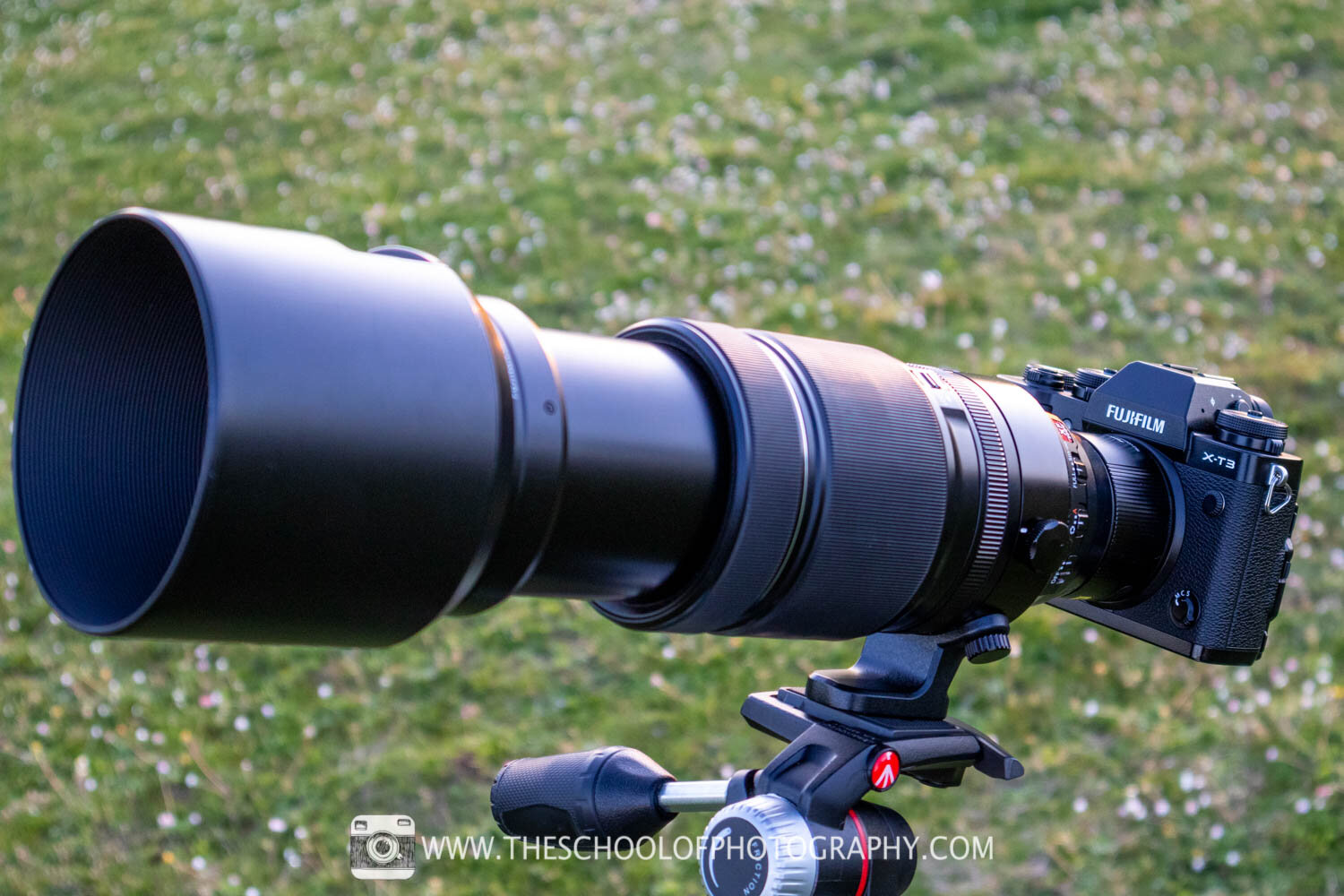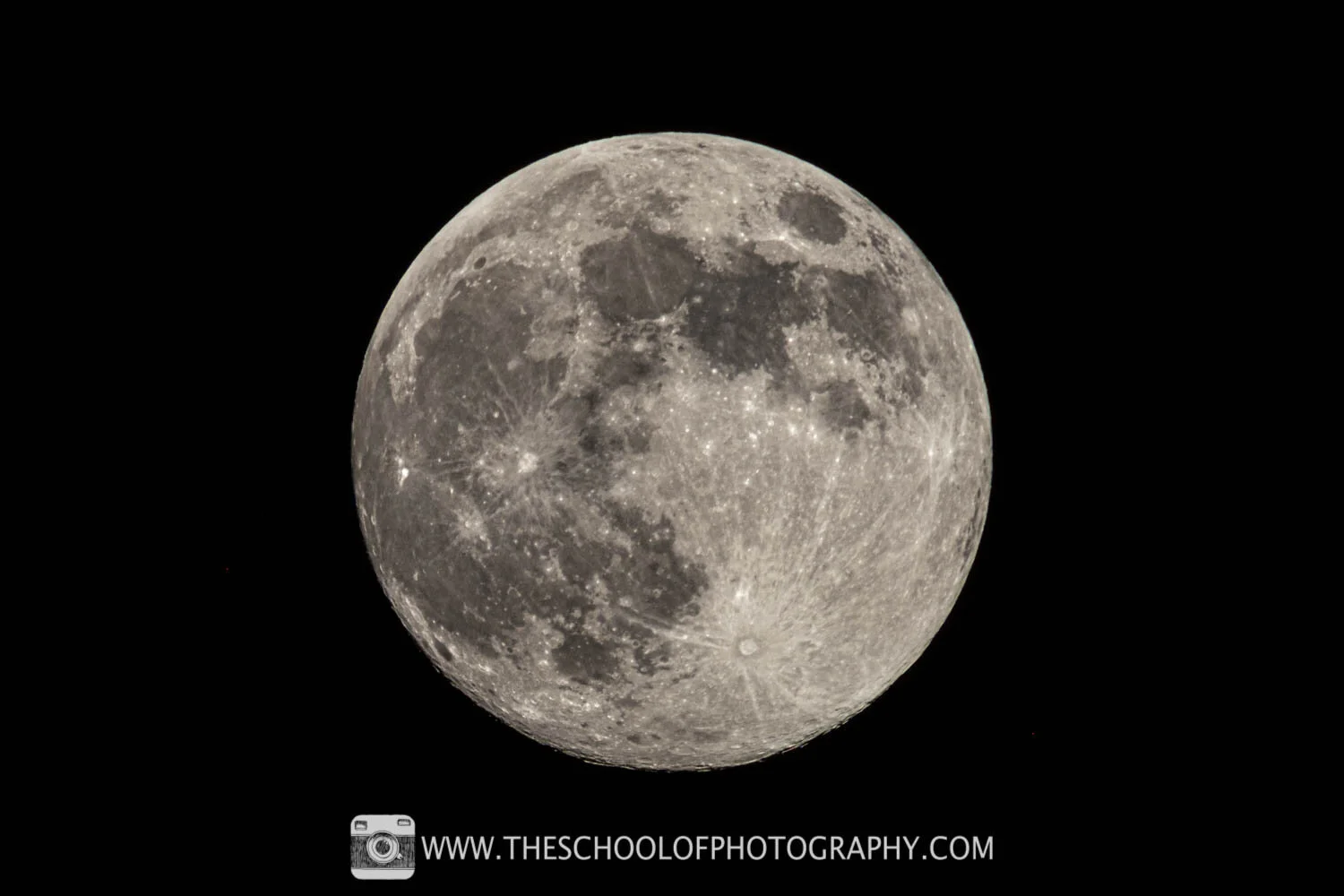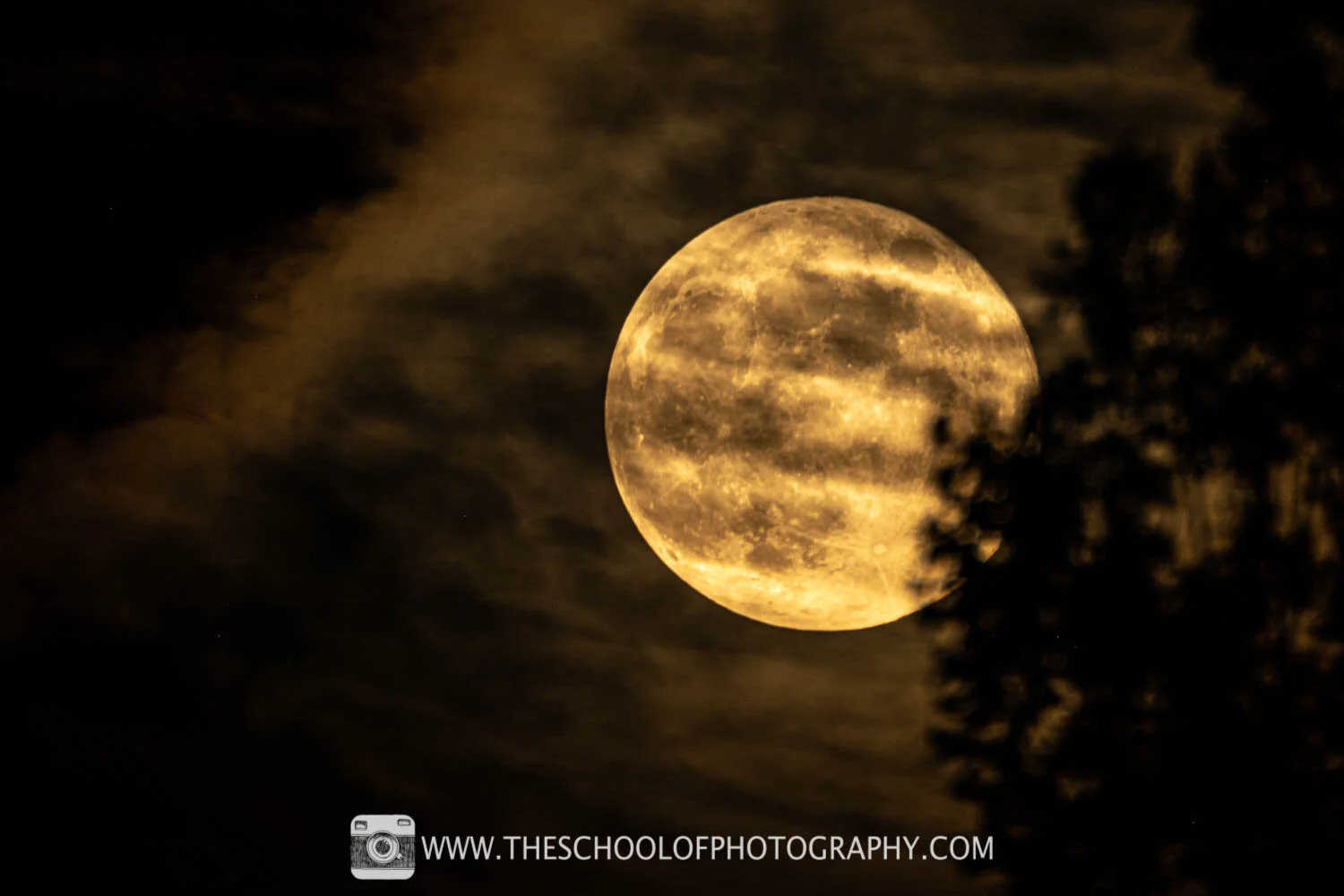Photographing the Moon
In this tutorial, we’re going to show you how to photograph the moon in all its glory. We’ll cover what settings, equipment and techniques you need to get that crisp shot of the moon. By the end of this tutorial, you’ll be photographing the moon pin sharp and with perfect exposure. Plus, we’re giving you a downloadable guide that you can take with you on your shoot.
You can grab our downloadable guide to photographing the moon below.
Get access to ALL our online courses – 1000’s of videos, worksheets, critiques of student’s work, personalised support and much more with our monthly membership.
Common problems when photographing the moon
Photographing the moon can be a challenge, especially if you don’t know what equipment or settings to use. There are two common problems with moon photography. These are blurry pictures (camera shake) and the photographs being over exposed (too bright). Here, we’ll look at why this happens and more importantly how to make sure it doesn’t.
If you want to learn more about capturing the moon and beyond, check out our Astrophotography course with Ben Bush.
1/5 Sec, F/11, ISO 160, Focal Length 800mm
1/60 Sec, F/11, ISO 80, Focal Length 800mm
Best locations for photographing the moon
This part is simple: The darker the better. Although it is possible, photographing the moon in built up areas can cause your shots to be unclear due to the light pollution. It’s best to try and find a location that is away from big towns and cities. Scout out your location before shooting. You’ll want to pick a place that offers a good vantage, possibly even elevated slightly, so that you get unobstructed views of the moon.
You’ll also want to consider the view you get of the moon as it moves across the sky – if it’s going to end up passing by light pollution, you may need to consider the effect this may have on the final image.
Best times for photographing the moon
It might surprise you to know that the best time for photographing the moon is when the sky is clear. The reason for this is that the moon looks fantastic in any stage of its lunar cycle. Whether it is a full moon or a waning crescent, you’re sure to get a great shot.
When you’re looking to experiment when photographing the moon, it’s worth considering shooting during astrological events such as supermoons, blood moons and lunar eclipses – you’ll need to research and plan these thoroughly as they are time and location sensitive. They can also be rare, so plan ahead if you don’t want to miss it!
Another way top experiment with moon photography would be to capture the moon during moonrise and moonset, though these may occur with slightly different lighting conditions and you may have to adjust your settings to fit the lighting conditions better.
In our example we take the shot two days before a full moon as it shows the moon big and full.
Consider the lunar phases when photographing the moon.
Equipment for photographing the moon
The Camera
For photography like this you can’t just use a mobile phone I’m afraid. You will need a DSLR or mirrorless camera with manual settings. It doesn’t have to be the latest or most expensive, just make sure you can access manual settings and change the lens. To learn more about cameras for manual photography, click here.
The Lens
Here’s where you start to burn a hole in your pocket! To get good photos of the moon you (or your camera) needs to get close to it and for that you need a telephoto lens. This is a lens that has a very narrow field of view. Commonly used for sports and wildlife photography.
The minimum focal length you will need on different sensor sized cameras is as follows:
Micro 4:3 Sensor – 300mm
Crop Sensor – 400mm
Full Frame Sensor – 600mm
To learn more about camera sensor sizes, click here. To learn about Focal Lengths in photography, click here.
Teleconverter (optional)
A teleconverter is a relatively low-cost way to increase the focal length of that lens. It’s a device that attaches in between the camera and the lens. In short, if you add a 2x teleconverter to your lens, you effectively double the focal length of that lens, e.g. a 400mm lens will now become an 800mm lens.
In our example we use a 400mm focal length with a 2x teleconverter thus making it 800mm.
Something to be aware of when using a teleconverter lens when photographing the moon is that they can cause a little degradation in your image quality, such as reduced sharpness and increased chromatic aberration, especially when used with lower quality lenses. You can also experience reduction in the effective aperture of the lens, resulting in slower shutter speeds and possibly higher ISO settings to compensate for the reduced light. However, it is a much cheaper alternative to shelling out thousands for the lenses that can reach these focal lengths, and, with a little post processing, you’ll be able to negate a lot of the possible disadvantages to using them in programs like Photoshop or Lightroom.
Tripod
You will need a good sturdy tripod for moon photography. This is because the lenses needed are big, heavy and will cause a small flimsy tripod to topple over.
Cable Release or Remote Trigger (optional)
Having a high focal length (zoomed in lens) really increases the chance of camera shake. It is important that the camera doesn’t move during the exposure and that it’s fully settled and still before the shot is taken. For this you will need a cable release or remote trigger which will allow you to take the picture without touching the camera.
If you don’t have one of these, you can use the ten second timer on your camera. The 2 second timer won’t allow enough time for the camera to settle. In our example we use the ten second timer built into the camera.
Settings for photographing the moon
In our example we show you two ways of photographing the moon. One using modern technology and the other using good old fashion manual mode.
Camera settings 1 – Relies on your camera having Touch Screen Shooting mode
Set the camera to its Aperture Priority mode.
Set the Aperture to f11.
Set the ISO to 100 or as near to this as your
camera allows. NB. We use ISO 160 in our
example as the camera does not go to 100.
Set your metering to Spot Metering.
Turn on your camera’s 10 second timer.
Turn on Touch Screen Shooting mode.
Then you fame up the shot, make sure the camera is secure and touch the screen on the moon. The camera will then focus on the moon, take an exact exposure and trigger the 10 second timer giving the camera time to settle before taking the shot. Viola!
1/210 Sec, F/11, ISO 160, Focal Length 800mm
1/125 Sec, F/11, ISO 160, Focal Length 800mm
Camera settings 2 – Good old fashion manual mode which will work on any camera
Set the camera to its Manual mode.
Set the Aperture to f11.
Set the ISO to 100 or as near to this as your camera allows.
Set the shutter speed to 1/125th of a second.
Turn on your camera’s 10 second timer or use a cable release.
Take the shot!
Don’t forget to download our guide to photographing the moon to help you while your out taking photos of the moon. You can get this at the top of this page.
0.5 Sec, F/11, ISO 160, Focal Length 719mm
1/125 Sec, F/11, ISO 400, Focal Length 800mm
Conclusion
Photographing the moon is a lot easier than you expect. If you use the settings we’ve suggested above, you can’t go wrong. You can also try and experiment with a variation on shutter speed and aperture if you’re looking for different effects. You may have to adjust these settings slightly with different moon cycles, but this is a good starting point. Simply adjust your shutter speed to make the shot lighter or darker as needed.
You can get creative when shooting the moon by using the surroundings, for example, shooting through trees or utilizing lens filters. Clouds can also add a certain feel to photographs of the moon- just make sure that you stay patient for this as the moon may hide behind the clouds at times.
To learn more about using your camera in manual, click here.
Like this? - Check out similar tutorials below
I hope you liked this video, please leave us a comment and support us by sharing it with your friends and subscribe to our newsletter at the bottom of this page for more.
We also have an excellent learning community on social media so please join us there as well.
Thanks for watching and remember – Learn more at The School of Photography.
















